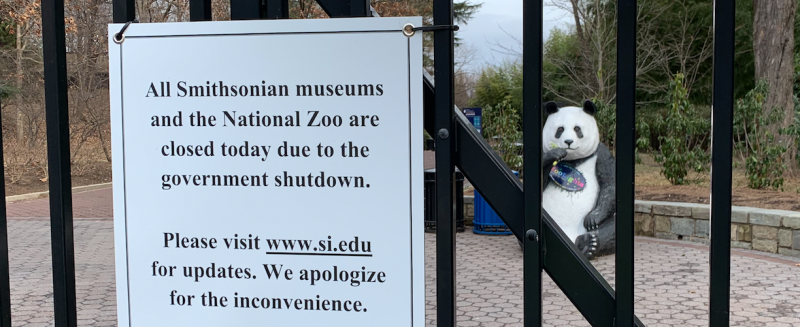A majority, 55%, of federal employees had their work negatively affected by this year’s partial government shutdown, while 46% had their pay interrupted, the latest findings from the annual Federal Employee Viewpoint Survey (FEVS) suggest. The FEVS results portray the breadth of disruption wrought by a record 35-day budgetary impasse that stranded one-quarter of federal agencies without funding.
The responses – released Thursday – fielded by the 2019 FEVS weren’t the only noteworthy topic, however, as the inclusion of questions about the shutdown marked a first for the governmentwide survey. In stark difference to when a budget sequestration cut funding levels in 2013, the 2019 decision to include questions on the shutdown marked a watershed moment for the Office of Personnel Management (OPM) – one precipitated by requests from agencies.
“From a research perspective and also from understanding trends in government, to me, this is something we absolutely had to do,” Kimberly Wells, Acting Director of OPM’s Office of Strategy and Innovation, said in a press briefing with reporters.
While many had weeks of pay suspended due to the shutdown, no exodus of employees will occur because of it, the 2019 FEVS seems to find.
Only one-third of federal employees who are looking for new jobs said the shutdown was a driving factor. On the flip side, 71% of respondents are not currently looking for a new job. Even though some federal employees have either accepted or searched for other work, not as many people have stepped a foot out of the government door as leaders might have feared.
“There’s always some concern that when you furlough people or when you put them through something like a shutdown, they might want to look for a job elsewhere,” Wells said.
The bearings of the shutdown negatively impacted other aspects of work. Of the 2019 shutdown’s major impacts, foremost was delayed work, FEVS respondents said. Declined customer service was another major ramification.
Yet, overall 2019 results remain positive for the workforce, despite the shutdown. Wells said that a pleasant surprise this year was the lack of regression in many important areas – such as engagement and performance management.
Employee engagement continued on an upward trend, while several key performance management initiatives improved by three or four percentage points. More employees feel in 2019 that promotions are based on merit, that awards depend on how well employees perform their jobs and that creativity and innovation are rewarded. Still, just 39%, 48% and 44% of federal employees, respectively, agree with those statements.
“There’s no secret that this has been a little bit of a tumultuous year because of the budget, and especially when you look at things like engagement … I was pleasantly surprised,” Wells said.
The story is quite different from that in 2013, the year of the last major government shutdown. In 2013, 53 items on the survey polled at lower satisfaction numbers than in 2012. Two items improved.
Since the 2013 FEVS did not include questions on sequestration, OPM could only speculate that the shutdown had something to do with poor scores. But with questions on the shutdown included in 2019, OPM had evidence to go off of.
Understanding trends is a crucial component of the FEVS, Wells said. Comparing results year to year, OPM can track where government is improving and where it is declining.
“We want to be as responsive as we can to agencies, to agencies’ needs,” Wells said. “We want to also be sure that we are providing insights to all of our stakeholders that use our data on those very contemporary topics.”
Another government shutdown could be in the offing for Nov. 21, when the funding passed in January to end the 2018-2019 shutdown will expire.
Important to note is that the FEVS is a census and not an exact count, meaning that the results can reflect sentiment only of the surveyed population. Therefore, results are skewed by how many respondents come from each agency and subgroup. Wells said there has been an effort to increase participation, and that agencies with high response rates provide a feedback loop to their employees – acting on the findings of the FEVS.
This year, the Veterans Affairs Department (VA) conducted its own workforce survey separately and the Defense Department (DoD), the largest government employer, logged lower response rates than the average agency. The lesser representation of these workforce populations means that the number of employees affected by the shutdown could have been overrepresented in the survey, as neither VA nor DoD was directly impacted by the shutdown.
Wells wants survey engagement to climb across agencies so that the census population more similarly mirrors the federal workforce’s population. Higher participation rates will lead to more actionable and accurate results, as currently, very large agencies and nonsupervisory roles are underrepresented.
“Ideally, we could give them incentives, but we can’t do that – no pizza parties or McDonald’s gift certificates,” Wells said. “But I know that agencies do things. There’s lots of sorts of marketing campaigns.”
Now, follow-up on the FEVS shutdown findings is murky. While OPM conducted the survey, Wells said that any shutdown-related workforce policies related to the FEVS are not in OPM’s future and that agencies would have to consider those themselves.





Leave a Reply
You must be logged in to post a comment.